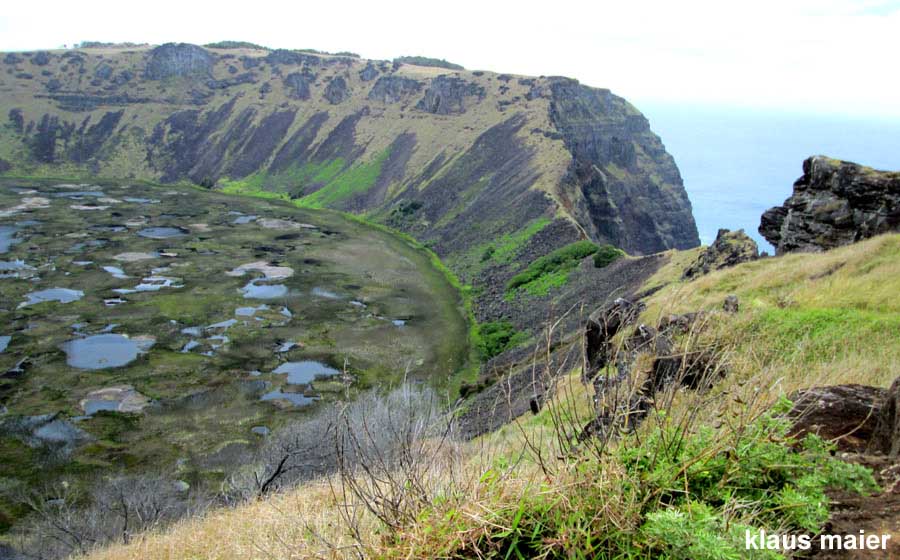
Rano Kau Crater
The crater of the Rano Kau volcano rises just behind the airport of Hanga Roa. In the crater, rainwater is collected in many small ponds. The volcanic cone stands directly on the Pacific Ocean, its flanks form a 400 m high cliff in the south-west of the Easter Island. The "Rano Kau" is one of the most beautiful natural wonders of the Easter Island. The National Park is suitable for walks along the crater rim with panoramic views of the island and the Pacific. The descent into the caldera is prohibited.
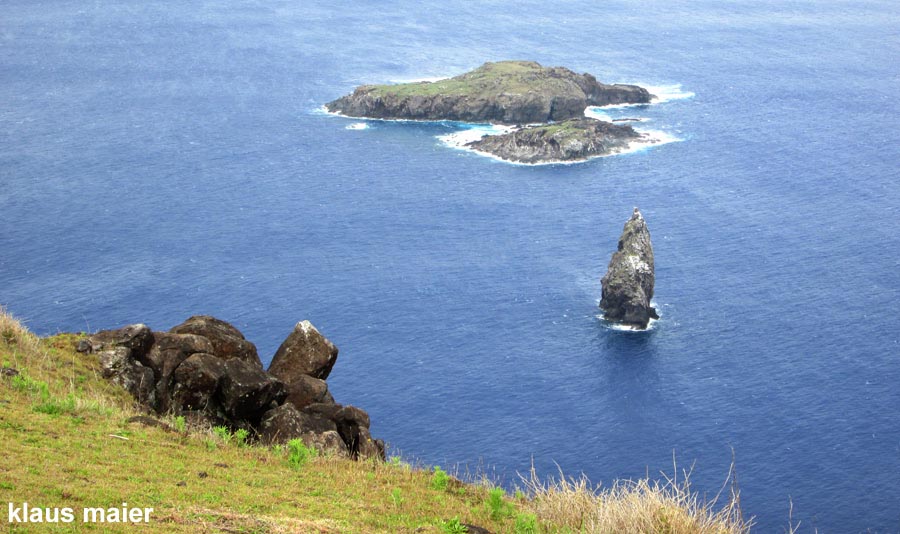
Motu Nui
Motu Nui is a rock that rises from the sea in front of the volcanic cone of Rano Kau. The rock became very significant due to the cult of the Birdman. When on Rapa Nui (Easter Island) the ancestor cult was replaced by the creator god "Makemake" in the 16th century, the office of the "Birdman" originated. Applicants for the office sent a Hopu (follower) to the competition held once a year. He had to climb down the rocks from Orongo, swim through the shark packed sea to the small island of "Moto Nui" and bring along from there an undamaged tern egg. Motu Nui is the last of the three rocks on the photo. The "birdman cult" ended with the arrival of the Europeans around 1860, who enslaved the inhabitants and brought the Christian faith to the Easter Island.
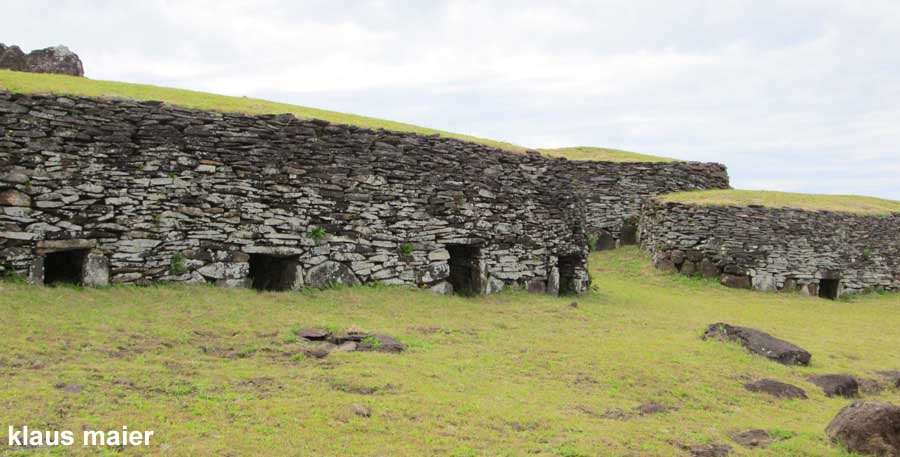
Orongo
The former cult site "Orongo" is located on the crater rim of Rano Kau. The competitions for the "Birdman" took place here. In Orongo there are over 50 houses built of layered stone slabs. The cave-like dwellings had a grass roof and holes that served as entrance and window. The stone buildings may not be entered but the view into the crater and the expanses of the Pacific are very impressive.
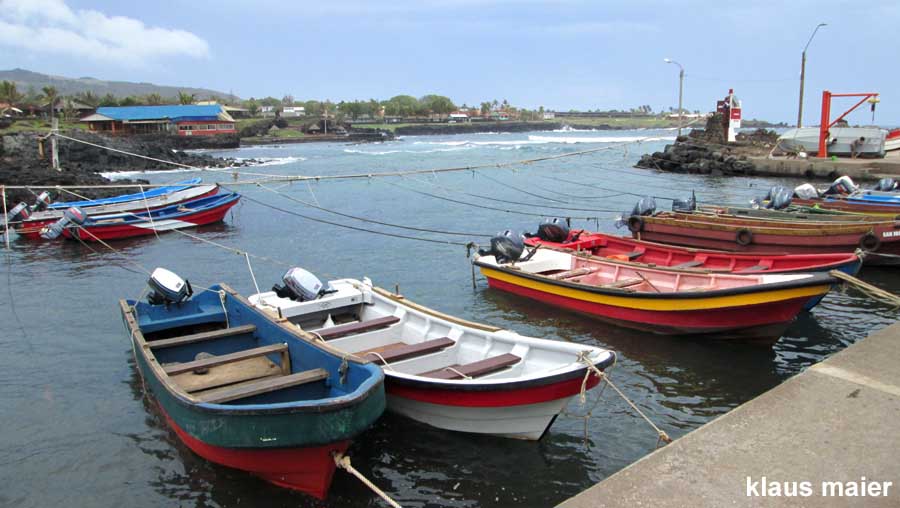
Hanga Roa
Hanga Roa is the only town on the Easter Island. With no more than 4,000 inhabitants, Hanga Roa supplies the numerous tourists of the island. South of Hanga Roa is Mataveri International Airport. In Hanga Roa are also all the hotels and the hospital of the island. In the harbor basin small fishing boats bob up and down.
The main attractions of Hanga Roa are "Ahu Tahai" and the Museo Antropologico Padre Sebastian Englert (see link). The museum displays artifacts from the Rapa Nui culture and rongorongo tablets. Here you can also get a lot more information about the Easter Island and the Polynesian history. The "Tapati Rapa Nui" is the biggest festival on the Easter Island, the polynesian culture festival attracts tourists with dancing in traditional costumes and music. The "Tapati Rapa Nui" takes place in the streets of Hanga Roa in February.
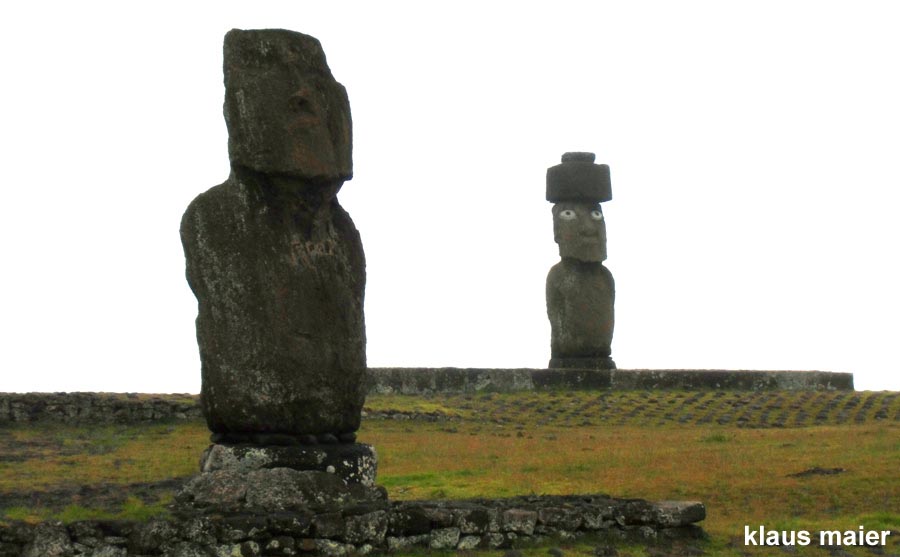
Ahu Tahai
The archaeological site "Ahu Tahai" is located on the coast in the northern part of the island capital Hanga Roa. The stone platform on which the "Moai Maea" (stone figures) stand, is called "Ahu". At "Ahu Tahai" there are 3 platforms, one with 5 figures "Ahu Vai Ure" and two with one "Moai" each. The Moai on the platform "Ahu Ko Te Riku" has a "Pukao" headdress and white eyes made of coralline lime. The Moai of "Ahu Tahai" were restored by the American anthropologist William Mulloy. At the "Ahu Tahai" also boat-shaped houses "Hare Paenga" were found.
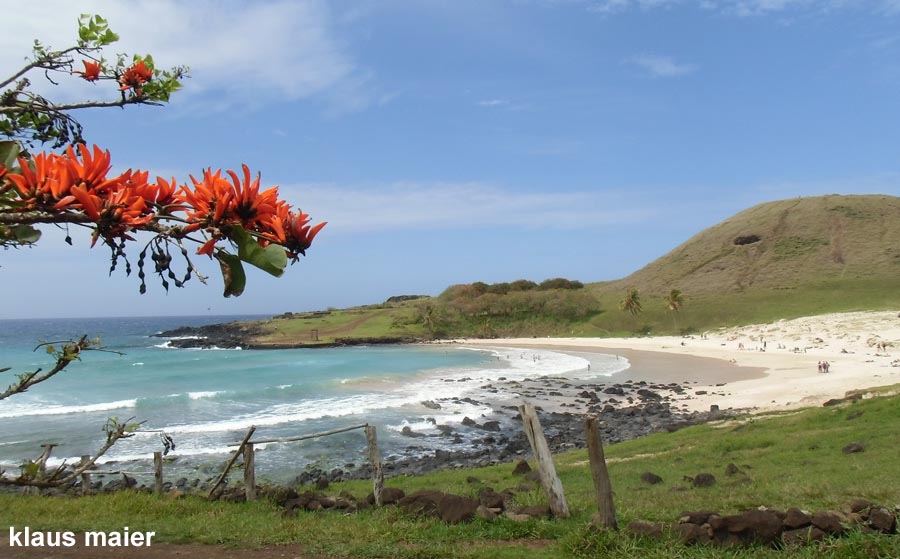
Playa Anakena
Playa Anakena is the only beautiful sandy beach on Easter Island. With palm trees and turquoise waters it looks like a South Sea paradise. This is the place where the first Polynesian Settlers landed on Rapa Nui. With the "Ahu Nau Nau" and the "Ahu Ature Huki", there are two Ahu platforms with stone heads near by. For locals and tourists the beach of Anakena is very popular.
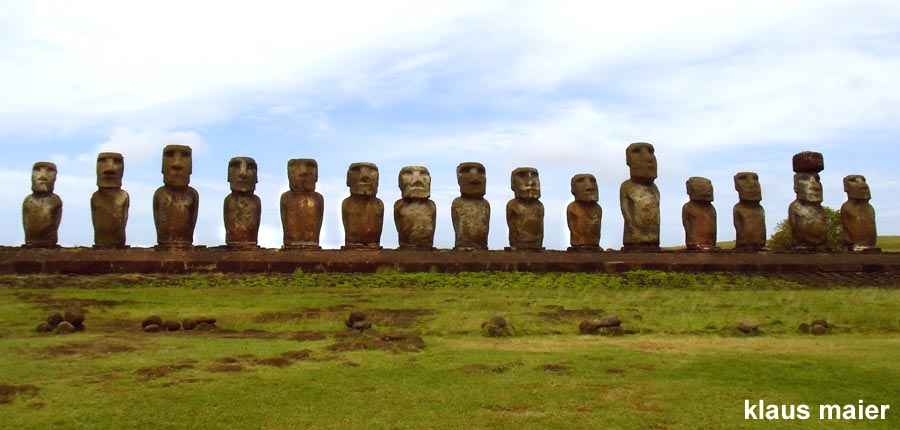
Ahu Tongariki
On the Peninsula Poike stands the largest Ahu platform with 15 Moai. The "Ahu Tongariki" stands directly on the coast and is one of the most famous photo motifs of the Easter Island. The Poike Peninsula is located in the very east of the island, so in the morning the sun rises directly behind the figures of the "Ahu Tongariki". Between the volcanic cone "Rano Raraku" and "Ahu Tongariki" was formerly a village. Petroglyphs of fish, turtles and a the "Birdman" were found here. In the volcanic cone of Rano Raraku a lake was formed, here you can watch the wild horses of Easter Island.
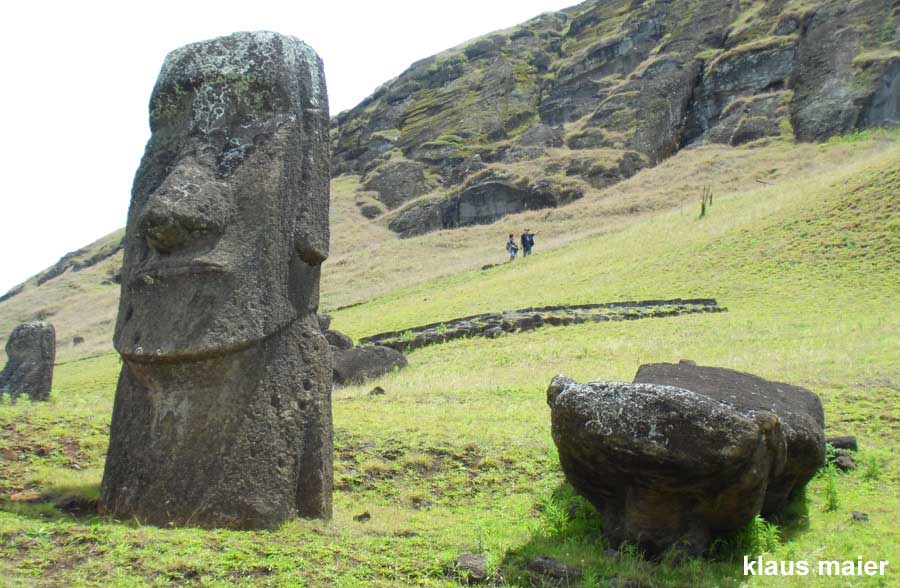
Rano Raraku
The "Moai" stone sculptures on Rapa Nui were struck in the quarries on the slopes of volcanic crater Rano Raraku. The Rano Raraku crater is one of the most beautiful landscapes on the island. On the slopes of Rano Raraku many Moai heads stick out of the ground. The figures are sometimes up to 7 m in the ground. Relatively high up on the crater slope is El Gigante, the largest of all "Moai" sculptures, which however was not completed and is still partially connected to the rock on the ground. "El Gigante" is about 20 meters long and weighs over 240 tons. At the foot of the Rano Raraku there was also a settlement, the foundations of some "Hare Paenga" straw huts, have survived the time. These huts belonged to the chiefs and priests of the tribe.
Map Easter Island
ads
Travel Guide Easter Island
Welcome to the Easter Island
The Easter Island is located about 3,800 km west of Santiago de Chile in the middle of the Pacific. The flight takes about 4 hours from Santiago to Hanga Roa. Easter Island has been part of Chile since 1888. The first settlers arrived around the year 1,000 from Polynesia. The Easter Island is called by the Polynesian inhabitants "Rapa Nui", the Chileans call it "Isla de Pascua". About 6,000 people live on the 162 km² island.
ads


